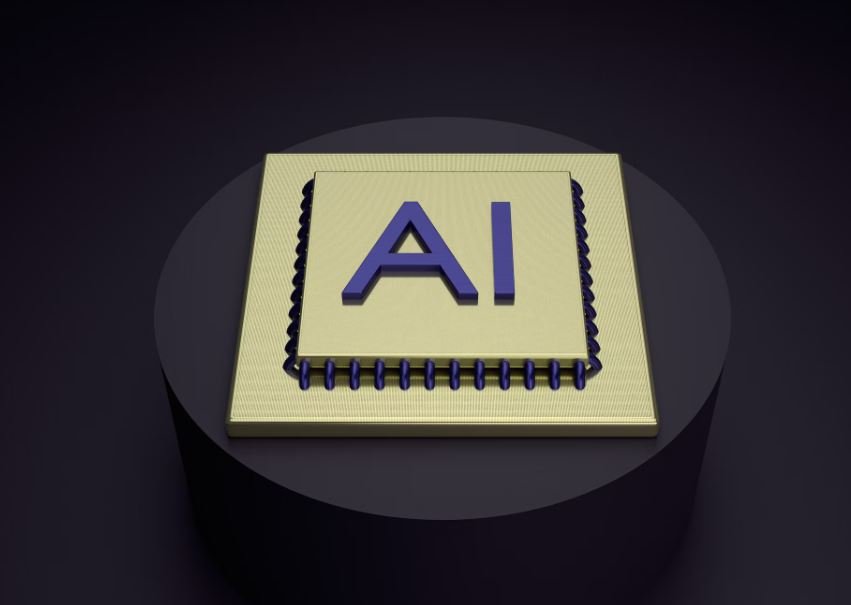Deep Learning is Subset of Machine Learning
Machine learning and deep learning are two popular terms used in the field of artificial intelligence. While they are closely related, deep learning can be considered as a subset of machine learning.
Key Takeaways:
- Deep learning is a subset of machine learning.
- Machine learning focuses on developing algorithms that can learn from and make predictions or decisions based on data.
- Deep learning is a specialized area of machine learning that leverages neural networks to automatically learn and extract patterns from data.
Machine learning is a field of study that focuses on developing algorithms that enable computers to automatically learn patterns or make predictions from data, without being explicitly programmed. It leverages statistical techniques and various algorithms to train models on large datasets and make decisions or predictions based on that learned knowledge.
One interesting aspect of machine learning is that it can handle a wide range of data types, including numeric, categorical, text, image, audio, or video data.
Deep learning, on the other hand, is a subset of machine learning that focuses on using neural networks to automatically learn and extract patterns from data. Neural networks are composed of interconnected nodes, similar to neurons in a biological brain. Deep learning models, with their multiple layers of interconnected nodes, can represent complex relationships and hierarchies in data more effectively than traditional machine learning algorithms.
What sets deep learning apart is its ability to automatically learn hierarchical representations of data, rather than relying on manual feature engineering.
To better understand the relationship between machine learning and deep learning, let’s explore some key differences between the two:
Machine Learning vs. Deep Learning
| Machine Learning | Deep Learning |
|---|---|
| Traditional algorithms and statistical techniques | Neural networks and hierarchical feature learning |
| Requires manual feature engineering | Automatically learns hierarchical representations |
| Suitable for structured and unstructured data | High performance on complex structured data |
Deep learning’s ability to automatically learn hierarchical representations makes it particularly suited for handling complex structured data.
Here are some interesting facts about deep learning:
Interesting Facts about Deep Learning
- Deep learning powers many popular applications such as image recognition, speech recognition, natural language processing, and autonomous vehicles.
- Google’s DeepMind, a leading research organization in deep learning, developed AlphaGo, an AI program that defeated the world champion in the complex game of Go.
- Deep learning models have been used to predict diseases and diagnose medical conditions with high accuracy.
These examples showcase the transformative potential of deep learning in various fields.
Ultimately, while deep learning is a powerful technique within the broader field of machine learning, it is important to note that not all machine learning approaches involve deep learning. Machine learning encompasses a wide range of algorithms and techniques beyond deep neural networks.
Whether you’re using machine learning or deep learning, both techniques have proven to be valuable tools for solving complex problems and making predictions based on data.

Common Misconceptions
Deep Learning is Subset of Machine Learning
One common misconception is that deep learning is a subset of machine learning. While deep learning is a subfield of machine learning, it is not accurate to say that it is a subset of it. Machine learning refers to the broader concept of algorithms that can learn and make predictions or decisions without being explicitly programmed, whereas deep learning specifically refers to neural networks with multiple hidden layers.
- Deep learning is a subfield of machine learning
- Machine learning encompasses a wider range of techniques
- Deep learning focuses on neural networks with multiple hidden layers
Another misconception is that deep learning and machine learning are interchangeable terms. Although related, they are not the same. Deep learning is a specific approach to machine learning that utilizes neural networks with multiple layers to learn and extract complex patterns and features from data. Machine learning, on the other hand, encompasses a broader range of algorithms and techniques for learning from data.
- Deep learning is a subset of machine learning
- Machine learning has a broader scope than deep learning
- Deep learning utilizes neural networks with multiple layers
Some people mistakenly believe that deep learning is superior to machine learning. While deep learning has shown remarkable performance in certain domains, it does not mean it is universally superior to other machine learning approaches. Deep learning excels in tasks involving large amounts of data and complex patterns, but for smaller datasets or problems that are better suited to other algorithms, traditional machine learning methods may perform just as well or even better.
- Deep learning is not always superior to other machine learning approaches
- Performance depends on the problem and dataset
- Traditional machine learning methods can be equally effective
Some people mistakenly assume that deep learning can accomplish any task without much domain knowledge or feature engineering. While deep learning can automatically learn and extract features from raw data, it still benefits from domain knowledge and may not always perform optimally without it. Understanding the problem domain and applying domain-specific knowledge can significantly improve the performance of deep learning models.
- Deep learning benefits from domain knowledge
- Domain-specific knowledge can improve deep learning performance
- Deep learning does not eliminate the need for feature engineering
Lastly, there is a misconception that deep learning requires large amounts of labeled data to be effective. While having a large labeled dataset can certainly help train deep learning models, there are techniques such as transfer learning and unsupervised learning that can still achieve good results with smaller datasets or even unlabeled data. Deep learning is constantly evolving, and researchers are exploring ways to make it more data-efficient.
- Deep learning can still be effective with small or unlabeled datasets
- Transfer learning and unsupervised learning are alternatives when labeled data is limited
- Research is ongoing to improve data efficiency in deep learning

Introduction
In this article, we will explore the relationship between deep learning and machine learning, highlighting the fact that deep learning is a subset of machine learning. Deep learning is a branch of artificial intelligence that focuses on the development of artificial neural networks capable of learning and making decisions on their own, while machine learning encompasses a broader range of algorithms and techniques that enable computers to learn and make predictions without being explicitly programmed. The following tables provide insightful data and information related to this topic.
The Birth of Deep Learning
The following table illustrates the timeline of key milestones in the development of deep learning:
| Milestone | Year |
|---|---|
| McCulloch-Pitts Neuron | 1943 |
| Perceptron | 1957 |
| Backpropagation | 1986 |
| LeNet-5 | 1998 |
| AlexNet | 2012 |
| DeepFace | 2013 |
| AlphaGo | 2016 |
Applications of Deep Learning
Deep learning has found utility in various fields. The table below showcases some of the applications of deep learning:
| Application | Description |
|---|---|
| Image Recognition | Identifying objects and patterns within images |
| Natural Language Processing | Understanding and generating human language |
| Speech Recognition | Converting spoken language into written text |
| Recommendation Systems | Suggesting personalized items or content |
| Autonomous Vehicles | Enabling cars to navigate and drive autonomously |
Distinguishing Features
While both deep learning and machine learning are part of the broader field of artificial intelligence, they possess unique attributes. The following table highlights some distinguishing features:
| Feature | Deep Learning | Machine Learning |
|---|---|---|
| Data Representation | Highly layered feature representation | Feature engineering required |
| Computation Power | Requires substantial computational resources | Less computationally intensive |
| Interpretability | Black-box model, difficult to interpret | Transparent models, easier to interpret |
| Training Data Size | Requires large-scale labeled data | Can perform with smaller labeled data |
Deep Learning vs. Machine Learning Algorithms
Various algorithms are utilized in deep learning and machine learning practices. The table below compares some representative algorithms:
| Algorithm | Deep Learning | Machine Learning |
|---|---|---|
| Convolutional Neural Networks | Used for image recognition | Not commonly utilized |
| Recurrent Neural Networks | Handles sequential data effectively | Not specifically designed for sequential data |
| Random Forest | Not applicable | Ensemble learning for classification and regression |
| Support Vector Machines | Not commonly utilized | Effective for classification and regression |
Advantages of Deep Learning
The benefits of deep learning extend beyond other machine learning techniques:
| Advantage |
|---|
| Ability to learn complex patterns |
| Highly scalable for large datasets |
| Reduced need for manual feature engineering |
| Capability to learn from unstructured data |
Limitations of Deep Learning
Despite its advantages, deep learning also possesses a few limitations, as shown in the table below:
| Limitation |
|---|
| Requires large amounts of labeled training data |
| Computationally expensive during training |
| Prone to overfitting without proper regularization |
| Difficult to interpret due to black-box nature |
The Future of Deep Learning
The following table explores potential advancements and future directions for deep learning:
| Advancement | Description |
|---|---|
| Explainable AI | Increasing interpretability and transparency in deep learning models |
| Generative Adversarial Networks | Enhancing the ability to generate realistic and synthetic data |
| Automated Machine Learning | Streamlining the process of model selection and hyperparameter optimization |
| Multi-Task Learning | Enabling models to perform multiple related tasks simultaneously |
Conclusion
Deep learning, as a subset of machine learning, has revolutionized the field of artificial intelligence. Through its ability to learn complex patterns and make decisions autonomously, deep learning has found applications in various domains. While deep learning and machine learning share similarities, they also possess unique characteristics. Deep learning’s reliance on neural networks and its requirement for substantial labeled data differentiate it from other machine learning approaches. As technologies continue to advance, the future of deep learning holds promise, with ongoing research focused on addressing limitations and exploring new frontiers.
Frequently Asked Questions
What is the relationship between deep learning and machine learning?
Deep learning is a subset of machine learning. It is a specific type of machine learning that uses neural networks with multiple layers to learn and analyze complex patterns and features from data.
How does deep learning differ from traditional machine learning?
While traditional machine learning algorithms require handcrafted feature engineering, deep learning algorithms are capable of automatically learning hierarchical representations of data. Deep learning networks are also able to process unstructured and raw inputs, such as images, audio, and text, without extensive pre-processing.
What are neural networks and how are they used in deep learning?
Neural networks are computational models inspired by the structure and function of the human brain. They consist of interconnected layers of artificial neurons, where each neuron performs mathematical operations on its inputs to produce an output. In deep learning, neural networks with multiple layers, known as deep neural networks, are employed to learn and extract complex features from data.
What are some popular applications of deep learning?
Deep learning has been successfully applied to various fields, including computer vision, natural language processing, speech recognition, and autonomous vehicles. It has been used for tasks such as image classification, object detection, language translation, sentiment analysis, and self-driving car control.
What are the advantages of using deep learning over traditional machine learning?
Deep learning has the ability to automatically learn representations from raw data, reducing the need for manual feature engineering. It can handle complex and large-scale problems, as deep neural networks can capture intricate relationships in data. Additionally, deep learning algorithms can continually improve their performance through the use of more data and computational resources.
What are the limitations of deep learning?
Deep learning algorithms often require large amounts of labeled training data to achieve good performance. They can also be computationally expensive and require powerful hardware to train and deploy. In some cases, deep learning models may also suffer from overfitting, where they perform well on training data but fail to generalize to unseen data.
Are deep learning and artificial intelligence the same thing?
No, deep learning is a subfield of machine learning that focuses on neural networks with multiple layers. Artificial intelligence (AI) refers to the broader field that aims to develop machines capable of intelligent behavior. Deep learning is one approach used in AI, but there are other techniques and algorithms employed in AI research and applications.
Is it necessary to have a background in mathematics to understand deep learning?
While a background in mathematics, particularly linear algebra and calculus, can be helpful in understanding the underlying principles of deep learning, it is not strictly necessary. Many high-level libraries and frameworks provide abstractions that allow researchers and practitioners to work with deep learning models without extensive mathematical knowledge. However, a basic understanding of concepts like matrix multiplication and derivatives can aid in interpreting and debugging models.
What are some popular deep learning frameworks?
Some popular deep learning frameworks include TensorFlow, PyTorch, Keras, Caffe, and MXNet. These frameworks provide high-level APIs and tools for building, training, and deploying deep learning models. They often offer GPU acceleration and support for distributed computing, making it easier to work with large-scale deep learning models.
What educational resources are available for learning deep learning?
There are numerous online courses, tutorials, and books available for learning deep learning. Some popular online platforms that offer deep learning courses include Coursera, Udacity, and edX. Additionally, many research papers and academic resources are freely available, allowing individuals to dive deeper into specific topics within deep learning.




